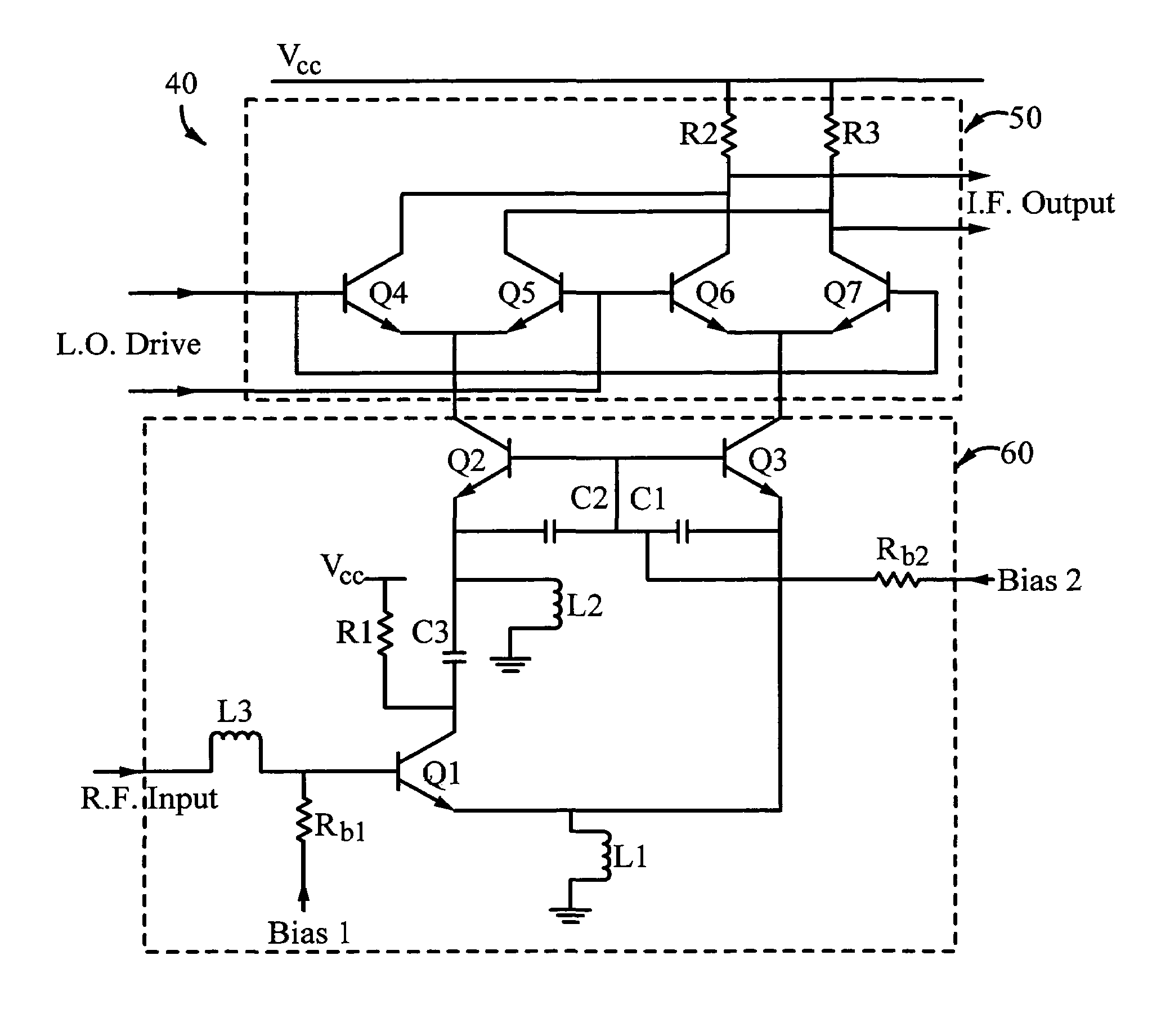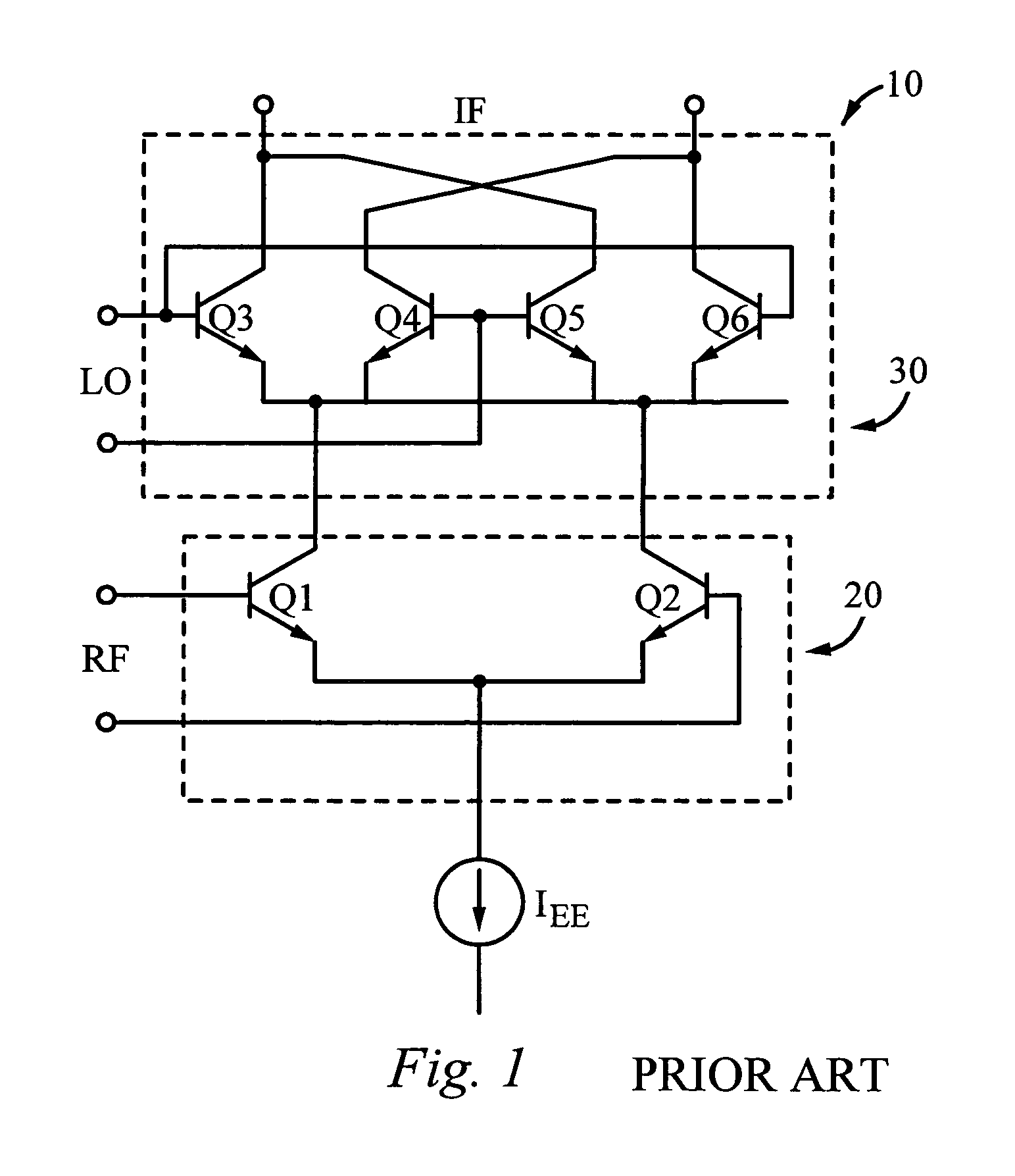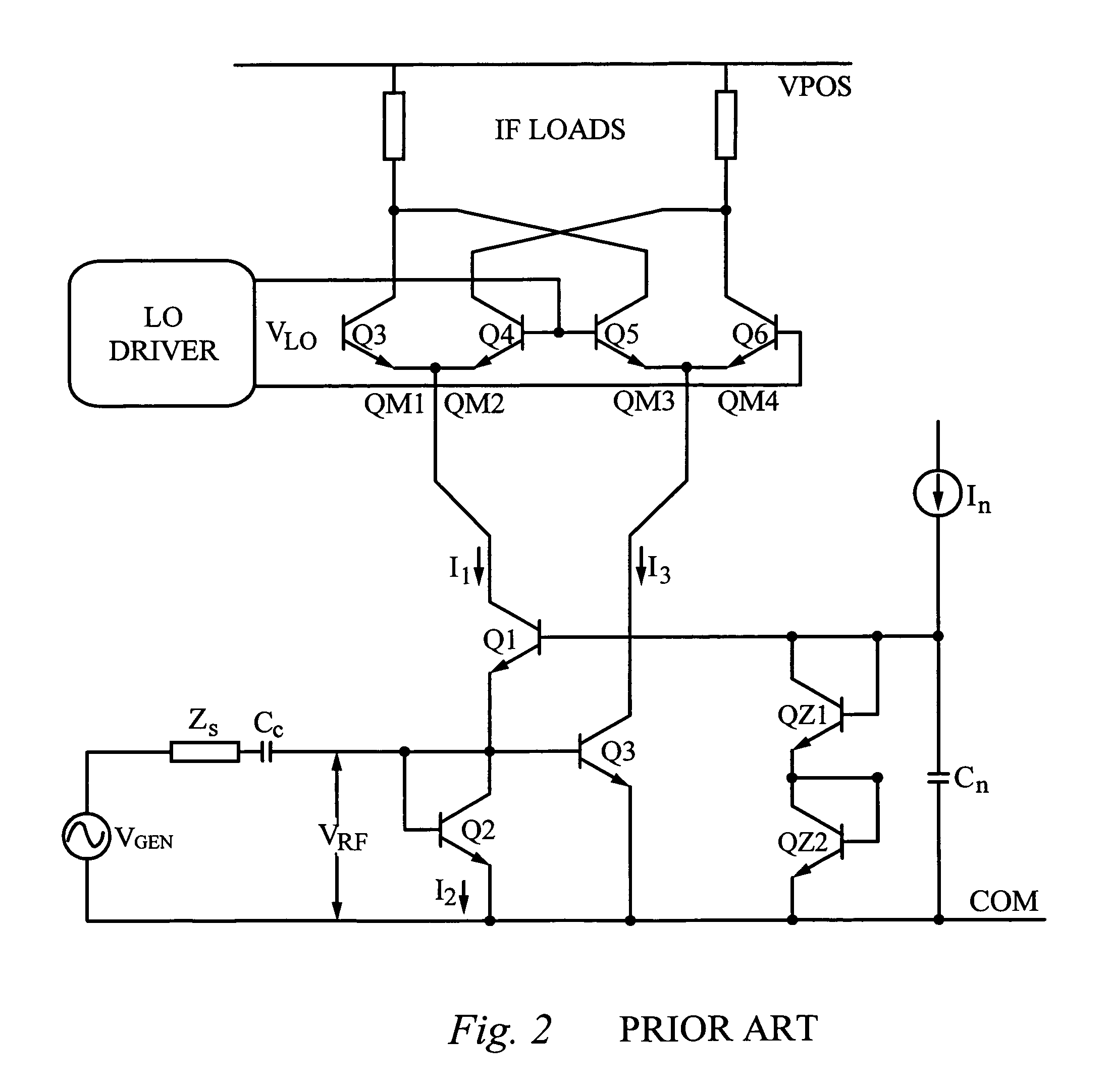Topology for a single ended input dual balanced mixer
a dual-balanced, single-ended technology, applied in the direction of oscillator, transmission noise suppression, electrical equipment, etc., can solve the problems of insignificant improvement of noise figure, inherent limitations, and degrading the dynamic range of differential pairs in the rf input section, so as to reduce the number of off-chip components, improve radio performance, and reduce the requirement for lo drives
- Summary
- Abstract
- Description
- Claims
- Application Information
AI Technical Summary
Benefits of technology
Problems solved by technology
Method used
Image
Examples
Embodiment Construction
[0021]This novel mixer topology circuit was developed as the input stage of the highly integrated receiver. This application requires a down conversion mixer with a higher dynamic range than the standard Gilbert cell, and with a single ended input to interface to an off chip filter. The mixer input is at 902–928 MHz, and its output is at the 1.024 MHz intermediate frequency of the receiver.
[0022]FIG. 3 shows the basic features of the new invention. The mixer 40 is generally shown. The mixer includes the mixer core 50 and the RF input stage 60. The mixer core 50 is coupled to the RF input stage 60. The mixer core 50 includes four transistors Q4–Q7 coupled as two differentially cross-coupled pairs as in the prior art of FIG. 2. The first differential transistor pair Q4 and Q5 are common emitter connected to the RF input stage 60 by way of the collector terminal of a transistor Q2 in the RF input stage 60. Similarly, the second differential transistor pair Q6 and Q7 are also common emi...
PUM
 Login to View More
Login to View More Abstract
Description
Claims
Application Information
 Login to View More
Login to View More - R&D
- Intellectual Property
- Life Sciences
- Materials
- Tech Scout
- Unparalleled Data Quality
- Higher Quality Content
- 60% Fewer Hallucinations
Browse by: Latest US Patents, China's latest patents, Technical Efficacy Thesaurus, Application Domain, Technology Topic, Popular Technical Reports.
© 2025 PatSnap. All rights reserved.Legal|Privacy policy|Modern Slavery Act Transparency Statement|Sitemap|About US| Contact US: help@patsnap.com



